- Home
- John D. MacDonald
The Price of Murder
The Price of Murder Read online
Praise for John D. MacDonald
“My favorite novelist of all time.”
—Dean Koontz
“For my money, John D. MacDonald’s Travis McGee is one of the great characters in contemporary American fiction—not crime fiction; fiction, period—and millions of readers surely agree.”
—The Washington Post
“MacDonald isn’t simply popular; he’s also good.”
—Roger Ebert
“MacDonald’s books are narcotic and, once hooked, a reader can’t kick the habit until the supply runs out.”
—Chicago Tribune Book World
“Travis McGee is one of the most enduring and unusual heroes in detective fiction.”
—Baltimore Sun
“John D. MacDonald remains one of my idols.”
—Donald Westlake
“A dominant influence on writers crafting the continuing series character.”
—Sue Grafton
“The Dickens of mid-century America—popular, prolific and … conscience-ridden about his environment … a thoroughly American author.”
—The Boston Globe
“It will be for his crisply written, smoothly plotted mysteries that MacDonald will be remembered.”
—USA Today
“MacDonald had the marvelous ability to create attention-getting characters who doubled as social critics. In MacDonald novels, it is the rule rather than the exception to find, in the midst of violence and mayhem, a sentence, a paragraph, or several pages of rumination on love, morality, religion, architecture, politics, business, the general state of the world or of Florida.”
—Sarasota Herald-Tribune
BY JOHN D. MACDONALD
The Brass Cupcake
Murder for the Bride
Judge Me Not
Wine for the Dreamers
Ballroom of the Skies
The Damned
Dead Low Tide
The Neon Jungle
Cancel All Our Vows
All These Condemned
Area of Suspicion
Contrary Pleasure
A Bullet for Cinderella
Cry Hard, Cry Fast
You Live Once
April Evil
Border Town Girl
Murder in the Wind
Death Trap
The Price of Murder
The Empty Trap
A Man of Affairs
The Deceivers
Clemmie
Cape Fear (The Executioners)
Soft Touch
Deadly Welcome
Please Write for Details
The Crossroads
The Beach Girls
Slam the Big Door
The End of the Night
The Only Girl in the Game
Where Is Janice Gantry?
One Monday We Killed Them All
A Key to the Suite
A Flash of Green
The Girl, the Gold Watch & Everything
On the Run
The Drowner
The House Guest
End of the Tiger and Other Stories
The Last One Left
S*E*V*E*N
Condominium
Other Times, Other Worlds
Nothing Can Go Wrong
The Good Old Stuff
One More Sunday
More Good Old Stuff
Barrier Island
A Friendship: The Letters of Dan Rowan and John D. MacDonald, 1967–1974
The Travis McGee Series
The Deep Blue Good-by
Nightmare in Pink
A Purple Place for Dying
The Quick Red Fox
A Deadly Shade of Gold
Bright Orange for the Shroud
Darker Than Amber
One Fearful Yellow Eye
Pale Gray for Guilt
The Girl in the Plain Brown Wrapper
Dress Her in Indigo
The Long Lavender Look
A Tan and Sandy Silence
The Scarlet Ruse
The Turquoise Lament
The Dreadful Lemon Sky
The Empty Copper Sea
The Green Ripper
Free Fall in Crimson
Cinnamon Skin
The Lonely Silver Rain
The Official Travis McGee Quizbook
The Price of Murder is a work of fiction. Names, characters, places, and incidents either are the product of the author’s imagination or are used fictitiously. Any resemblance to actual persons, living or dead, events, or locales is entirely coincidental.
2013 Random House eBook Edition
Copyright © 1957 by John D. MacDonald
Copyright renewed 1985 by John D. MacDonald
Introduction copyright © 2013 by Dean Koontz
All rights reserved.
Published in the United States by Random House, an imprint of The Random House Publishing Group, a division of Random House, Inc., New York.
RANDOM HOUSE and colophon are registered trademarks of Random House, Inc.
Originally published in paperback in the United States by Fawcett, an imprint of The Random House Publishing Group, a division of Random House, Inc., in 1957.
eISBN: 978-0-307-82698-5
www.atrandom.com
Cover design: Joe Montgomery
v3.1
Contents
Cover
Other Books by This Author
Title Page
Copyright
Introduction
Prologue
Chapter One
Chapter Two
Chapter Three
Chapter Four
Chapter Five
Chapter Six
Chapter Seven
Chapter Eight
Chapter Nine
Chapter Ten
Chapter Eleven
Chapter Twelve
About the Author
The Singular John D. MacDonald
Dean Koontz
When I was in college, I had a friend, Harry Recard, who was smart, funny, and a demon card player. Harry was a successful history major, while I passed more time playing pinochle than I spent in class. For the three and a half years that I required to graduate, I heard Harry rave about this writer named John D. MacDonald, “John D” to his most ardent readers. Of the two of us, Harry was the better card player and just generally the cooler one. Consequently, I was protective of my position, as an English major, to be the better judge of literature, don’t you know. I remained reluctant to give John D a look.
Having read mostly science fiction, I found many of my professors’ assigned authors markedly less exciting than Robert Heinlein and Theodore Sturgeon, but I was determined to read the right thing. For every Flannery O’Connor whose work I could race through with delight, there were three like Virginia Woolf, who made me want to throw their books off a high cliff and leap after them. Nevertheless, I continued to shun Harry’s beloved John D.
Five or six years after college, I was a full-time writer with numerous credits in science fiction, struggling to move into suspense and mainstream work. I was making progress but not fast enough to suit me. By now I knew that John D was widely admired, and I finally sat down with one of his books. In the next thirty days, I read thirty-four of them. The singular voice and style of the man overwhelmed me, and the next novel I wrote was such an embarrassingly slavish imitation of a MacDonald tale that I had to throw away the manuscript.
I apologized to Harry for doubting him. He was so pleased to hear me proclaiming the joys of John D that he only said “I told you so” on, oh, twenty or thirty occasions.
Over the years, I have read every novel by John D at least three times, some of them twice that often.
His ability to evoke a time and place—mostly Florida but also the industrial Midwest, Las Vegas, and elsewhere—was wonderful, and he could get inside an occupation to give you the details and the feel of it like few other writers I’ve ever read. His pacing was superb, the flow of his prose irresistible, and his suspense watch-spring tight.
Of all his manifest strengths as a writer, however, I am most in awe of his ability to create characters who are as real as anyone I’ve met in life. John D sometimes paused in the headlong rush of his story to spin out pages of background on a character. At first when this happened, I grumbled about getting on with the story. But I soon discovered that he could make the character so fascinating that when the story began to race forward again, I wanted it to slow down so I could learn more about this person who so intrigued and/or delighted me. There have been many good suspense novelists in recent decades, but in my experience, none has produced characters with as much humanity and truth as those in MacDonald’s work.
Like most who have found this author, I am an admirer of his Travis McGee series, which features a first-person narrator as good as any in the history of suspense fiction and better than most. But I love the standalone novels even more. Cry Hard, Cry Fast. Where Is Janice Gantry? The Last One Left. A Key to the Suite. The Drowner. The Damned. A Bullet for Cinderella. The Only Girl in the Game. The Crossroads. All These Condemned. Those are not my only favorites, just a few of them, and many deal with interesting businesses and occupations. Mr. MacDonald’s work gives the reader deep and abiding pleasure for many reasons, not the least of which is that it portrays the contemporary life of his day with as much grace and fidelity as any writer of the period, and thus it also provides compelling social history.
In 1985, when my publisher, Putnam, wanted to send advance proof copies of Strangers to Mr. MacDonald among others, I literally grew shaky at the thought of him reading it. I suggested that they shouldn’t send it to him, that, as famous and prolific as he was, the proof would be an imposition on him; in truth, I feared that he would find the novel unsatisfying. Putnam sent it to him anyway, and he gave us an enthusiastic endorsement. In addition, he wrote to me separately, in an avuncular tone, kindly advising me how to avoid some of the pitfalls of the publishing business, and he wrote to my publisher asking her to please carefully consider the packaging of the book and not condemn it to the horror genre. She more or less condemned it to the genre anyway, but I took his advice to heart.
In my experience, John D. MacDonald, the man, was as kind and thoughtful as his fiction would lead you to believe that he must be. That a writer’s work accurately reflects his soul is a rarer thing than you might imagine, but in his case, the reflection is clear and true. For that reason, it has been a special honor, in fact a grace, to be asked to write this introduction.
Reader, prepare to be enchanted by the books of John D. MacDonald. And Harry, I am not as much of an idiot as I was in years gone by—though I know you won’t let me get away with claiming not to be to any degree an idiot anymore.
PROLOGUE
“If I could have the attention of the other members of the Commission for a moment, please. Let me reconstruct for you the actual physical details of the first murder.
“He was roughly ten feet from her. We know she turned and snatched open the knife drawer. But he was on her before she could grasp one of the knives. He held her with his right hand at the nape of her neck. We are not certain of the position of his left arm. It may have been around her waist, but more probably, he grasped the rear of her … ah … garment in the vicinity of the waist. Then, gentlemen, he lifted her bodily and, with terrible force, brought her face and head down against the edge of the sink.
“I present three cranial X-rays and two photographs of the body which show the extent of the damage inflicted. By a careful examination of the fractures and other facial damage we can be certain that he lifted her and slammed her down no less than fifteen times, and it could possibly have been twice that. After the first impact she was certainly unconscious, perhaps dying. She presented a dead weight then of one hundred and fifteen pounds. Assuming a two-second cycle for each impact, he spent a full minute blindly smashing that lifeless body against the edge of the sink. Is that not the action of a sick mind?
“I now ask for a full minute of silence. During this minute please try to visualize that scene of murder. Go!”
CHAPTER ONE
Lee Bronson
The parole officer came to the house on a hot Saturday afternoon in October. Lee Bronson had set up a card table on the small screened porch of his rented house at 1024 Arcadia Street, where he sat reading and marking the English themes turned in on Friday by his English Composition 2A class of forty-one students at Brookton Junior College.
He sat in a wicker chair and wore a T-shirt with a torn shoulder, faded khakis, and old tennis shoes. The porch was on the front of the house, with a heavy screen of plantings that nearly concealed it from the pedestrians on the walk beyond the shallow front yard. Big elms grew on Arcadia Street, and their roots had buckled and cracked the old sidewalk. High branches touched over the middle of the street, and in the summer the dense shade lay heavily on the shallow front lawns of the frame houses.
When he looked up from his work he could see a segment of sidewalk and street. He could hear the sounds of the street. Motors of delivery trucks, whirring clack of roller skates, the nasal sputter of a small, familiar, and excessively noisy power mower several houses down on the other side of the street.
He was twenty-nine, a big man with wide hard shoulders, sculptured chest, wide bands of muscle linking neck and shoulders—narrow through waist and flank. He held himself trimly and moved lightly and with a quickness. His hair was brown and cut short, his eyes gray, quiet, slightly myopic. Though his face was bony, forthright, his habitual expression was one of mild patience, tinged by sadness, and when he was amused there was a wryness in the way his mouth turned down at the corners. With his black-framed reading glasses on he looked properly scholarly. This was his third year at Brookton. His contract called for instruction in English and Physical Education. He acted as an assistant coach in the school athletic program, and worked at it hard enough to keep himself in trim.
He liked working with the kids. It gave him a sense of purpose. He liked to watch them grow and change, and feel that he had something to do with that growth. Yet it was only during his rare moods of complete depression that he was willing to admit to himself that without this joy in his work, his life would be unendurable. During those times he could clearly see the dimensions of the trap into which he had so blindly wandered. A perfumed trap. A silky and membranous and pneumatic little trap. A trap named Lucille.
He picked up the next composition. This was a new class. He had just begun to associate faces with the names. Jill Grossman. A strange and terrified little mouse, almost an albino, with a pinched little face and glasses with a blue tint. But her work had talent. He decided he would like to ask her to join his unofficial seminar, the kids he invited over to the house in the evenings.
But Lucille was being even more difficult about such get-togethers this year than last. She could not see any reason for doing anything you were not paid to do. Lucille flounced off to the movies on those evenings.
After he had marked Jill’s paper, and made marginal notes cautioning her about being too florid and precious, he looked at his watch. A little after four. He hoped Lucille would remember to bring back the cold six-pack of beer he’d asked for. But it wasn’t likely. But he was certain of one thing she would bring back—her standard comments about how grim it was to have to use the public pool to go swim with Ruthie, her best girl friend, when, it they could belong to Crown Ridge Club which was so cheap really, and they could get in easy, the pool was really lovely with lights under the water at night, and she could take Ruthie there, and all winter they had the dances. And of course they didn’t belong to the Crown Ridge Club because he didn’t love her. It was the only possib
le answer. He was taking her for granted. It was impossible to explain family finances to Lucille. Figures bored her.
And any serious attempt to make her understand the budget always gave her a new opening.
“So if we’re so poor we can’t join just one cheap little club, why don’t you write another book and make some money? You wrote a book, didn’t you? So you could write for the television and the movies and the big magazines, couldn’t you? Instead of having those weird kids coming over here all the time, you could be writing and making some money so we could live nicer. You don’t want me to have nice things. That’s it, isn’t it? You just don’t care any more.”
And it was useless to try to explain to her that his single book had used up a whole year of creative energy, that it had earned a big two hundred and fifty dollar advance and a magnificent one hundred and eighteen dollars and thirty-three cents in additional royalties. No use to try to tell her that his talent was small, and that it certainly could not accomplish anything in the environment she had helped create. The kids were his creative outlet. But he had displayed the “author” tag far too prominently during their brief courtship. It gave her a weapon she could never resist wielding.
Just as he picked up the final composition in the pile he had brought home, somebody banged on the screen door, banged with unnecessary loudness, with a flavor of irritation and arrogance. From where Lee sat he could see baggy knees of gray pants, a slice of white shirt.
He pushed his chair back and started to get up. The screen door was pulled open and a man walked in. He was a thickset man, heavy around the middle, with a lean hollow-cheeked face that did not match his puffy build. A tan felt hat with a sweat-stained band was pushed back off his forehead. His nose was bulbous at the tip, and patterned with small broken red veins, prominent against the uniform pallid gray of his face. His eyes were small and blue and the flesh around them was dark-stained and puffy. He carried his gray suit coat over his left arm. The left hand, in a soiled white glove that fit too tightly, was obviously artificial. His hard black shoes were dusty and he walked toward Lee as though his feet were tender.

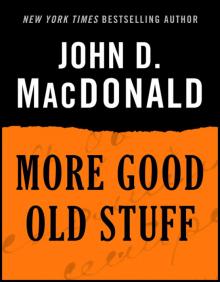 More Good Old Stuff
More Good Old Stuff The Long Lavender Look
The Long Lavender Look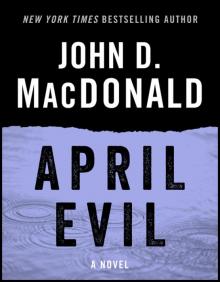 April Evil
April Evil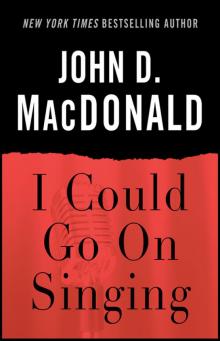 I Could Go on Singing
I Could Go on Singing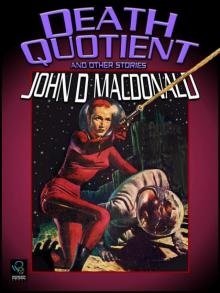 Death Quotient and Other Stories
Death Quotient and Other Stories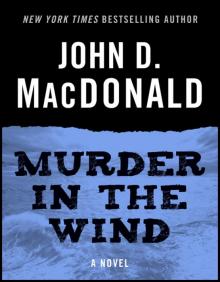 Murder in the Wind
Murder in the Wind The Quick Red Fox
The Quick Red Fox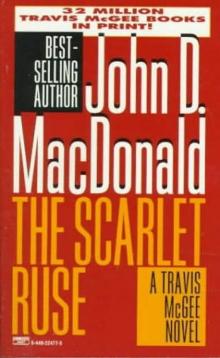 The Scarlet Ruse
The Scarlet Ruse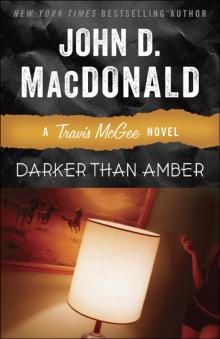 Darker Than Amber
Darker Than Amber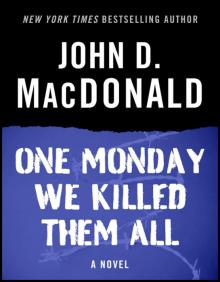 One Monday We Killed Them All
One Monday We Killed Them All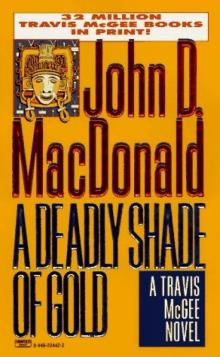 A Deadly Shade of Gold
A Deadly Shade of Gold The Girl, the Gold Watch and Everything
The Girl, the Gold Watch and Everything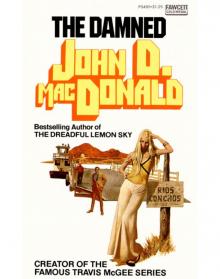 The Damned
The Damned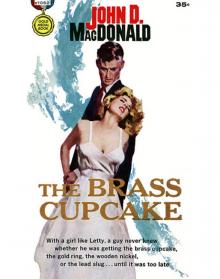 The Brass Cupcake
The Brass Cupcake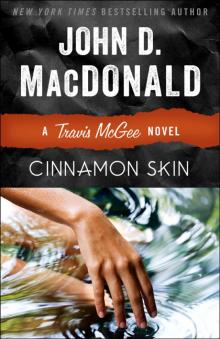 Cinnamon Skin
Cinnamon Skin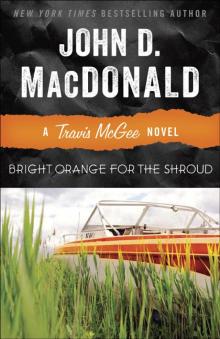 Bright Orange for the Shroud
Bright Orange for the Shroud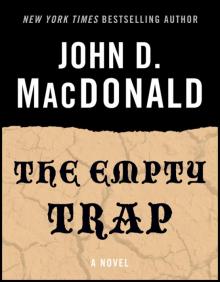 The Empty Trap
The Empty Trap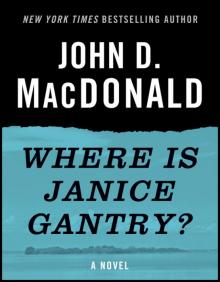 Where Is Janice Gantry?
Where Is Janice Gantry?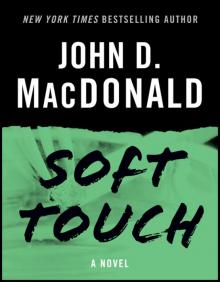 Soft Touch
Soft Touch Condominium
Condominium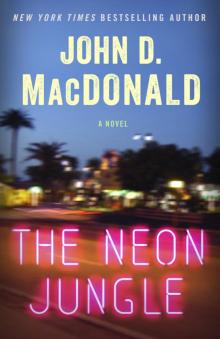 The Neon Jungle
The Neon Jungle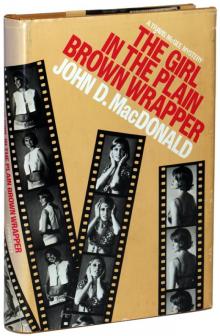 Girl In The Plain Brown Wrapper
Girl In The Plain Brown Wrapper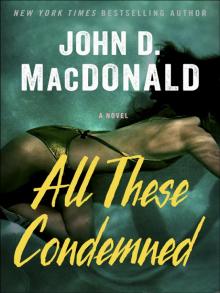 All These Condemned
All These Condemned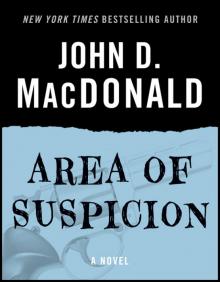 Area of Suspicion
Area of Suspicion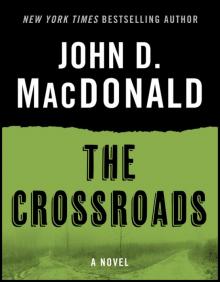 The Crossroads
The Crossroads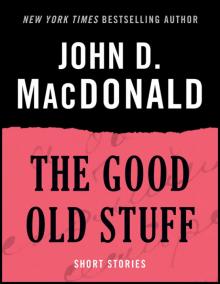 The Good Old Stuff
The Good Old Stuff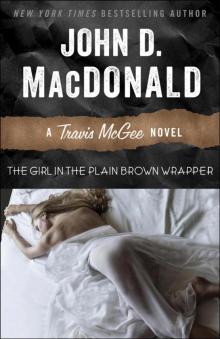 The Girl in the Plain Brown Wrapper
The Girl in the Plain Brown Wrapper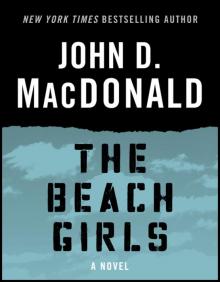 The Beach Girls
The Beach Girls A Purple Place For Dying
A Purple Place For Dying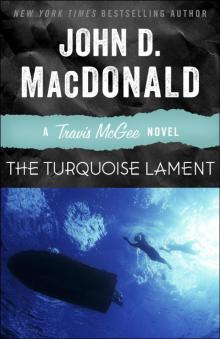 The Turquoise Lament
The Turquoise Lament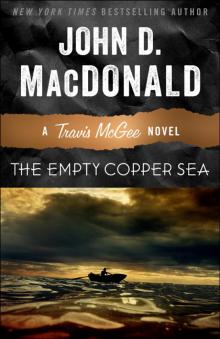 The Empty Copper Sea
The Empty Copper Sea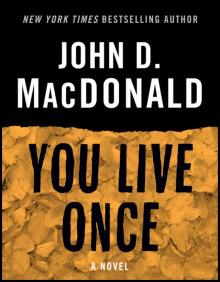 You Live Once
You Live Once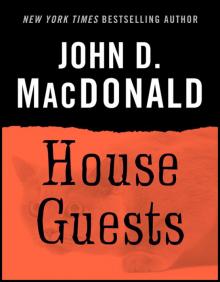 The House Guests
The House Guests A Bullet for Cinderella
A Bullet for Cinderella A Man of Affairs
A Man of Affairs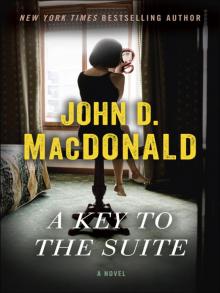 A Key to the Suite
A Key to the Suite Please Write for Details
Please Write for Details Free Fall in Crimson
Free Fall in Crimson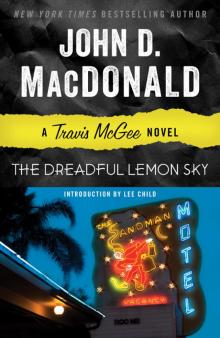 The Dreadful Lemon Sky
The Dreadful Lemon Sky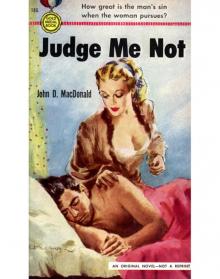 Judge Me Not
Judge Me Not The Price of Murder
The Price of Murder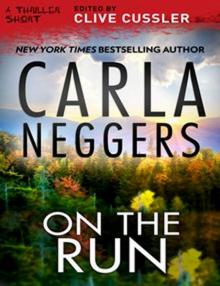 On the Run
On the Run The Deep Blue Good-Bye
The Deep Blue Good-Bye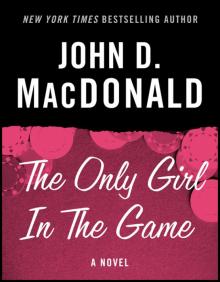 The Only Girl in the Game
The Only Girl in the Game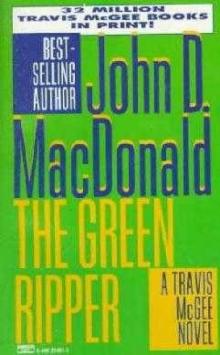 The Green Ripper
The Green Ripper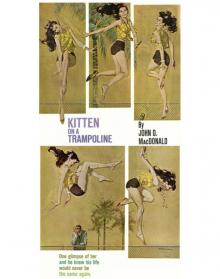 Kitten on a Trampoline
Kitten on a Trampoline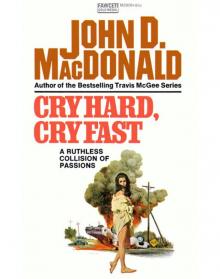 Cry Hard, Cry Fast
Cry Hard, Cry Fast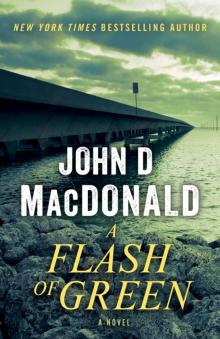 A Flash of Green
A Flash of Green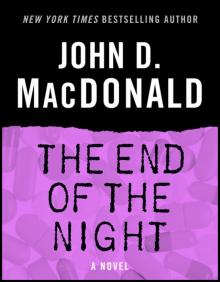 The End of the Night
The End of the Night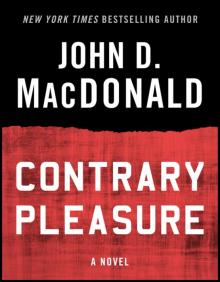 Contrary Pleasure
Contrary Pleasure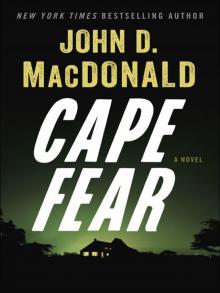 Cape Fear
Cape Fear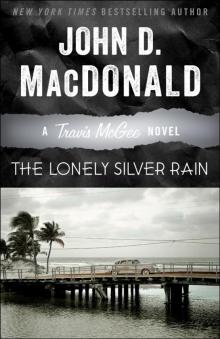 The Lonely Silver Rain
The Lonely Silver Rain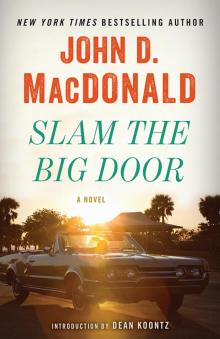 Slam the Big Door
Slam the Big Door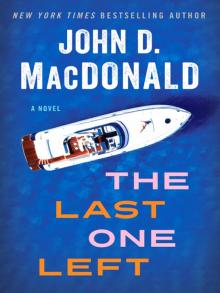 The Last One Left
The Last One Left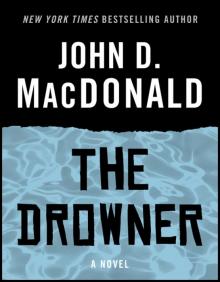 The Drowner
The Drowner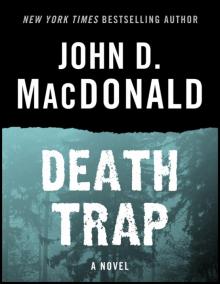 Death Trap
Death Trap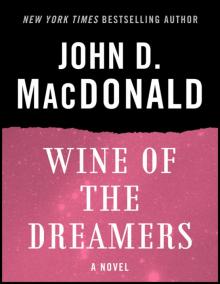 Wine of the Dreamers: A Novel
Wine of the Dreamers: A Novel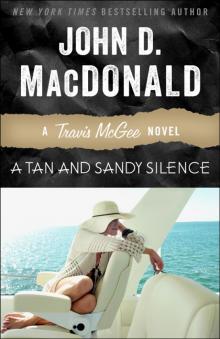 A Tan and Sandy Silence
A Tan and Sandy Silence One Fearful Yellow Eye
One Fearful Yellow Eye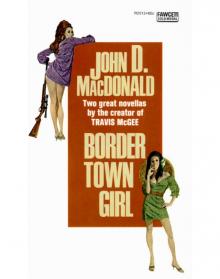 Border Town Girl
Border Town Girl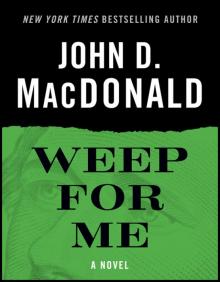 Weep for Me
Weep for Me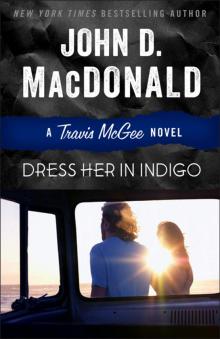 Dress Her in Indigo
Dress Her in Indigo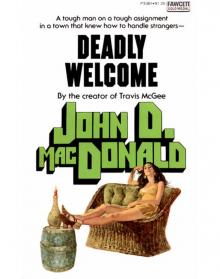 Deadly Welcome
Deadly Welcome Cancel All Our Vows
Cancel All Our Vows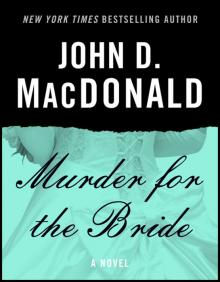 Murder for the Bride
Murder for the Bride End of the Tiger
End of the Tiger